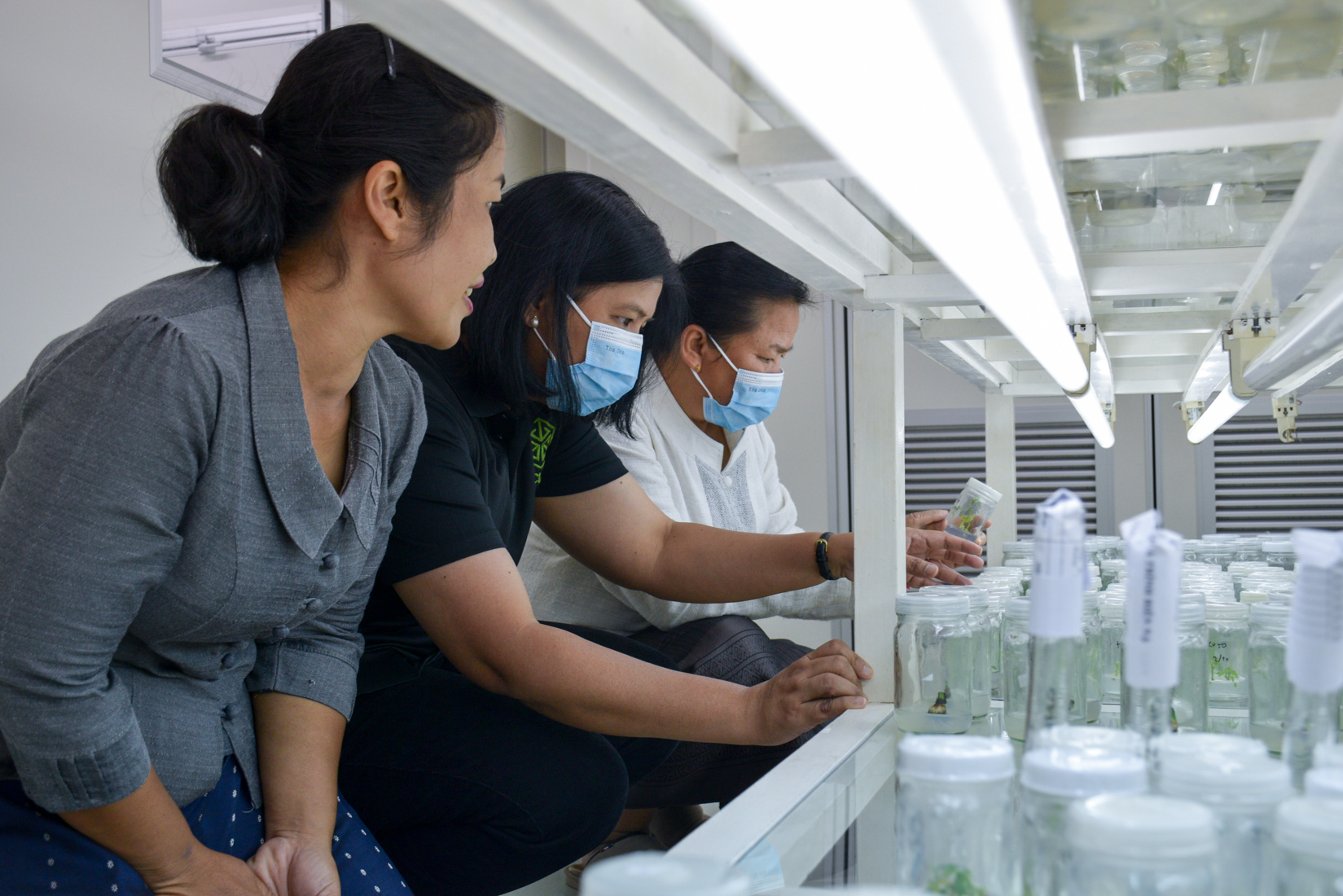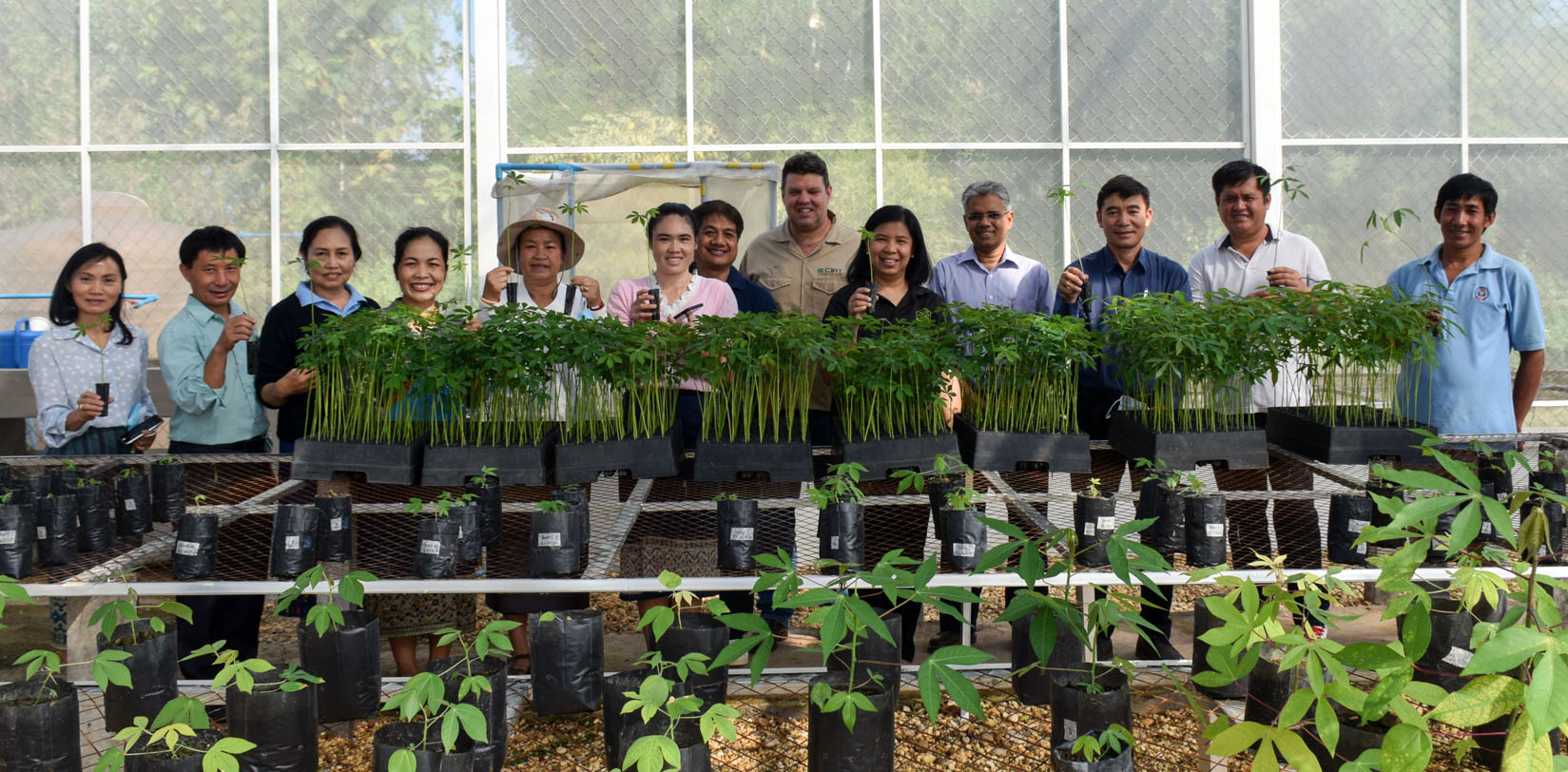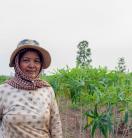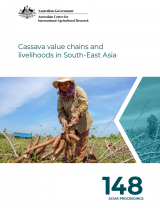Disease-resistant cassava to help SE Asian farmers

In the final months of the International Year of Plant Health, ACIAR-supported research has made significant progress towards developing disease-resistant cassava varieties across South-East Asia.
The milestones stem from a project across Cambodia, Laos, and Vietnam developing sustainable solutions to two cassava diseases; Cassava Mosaic Disease (CMD) and Cassava Witches Broom Disease (CWBD).
Both diseases threaten cassava production in the region—a multibillion-dollar industry that generates incomes for more than four million smallholder farming households.
Howard Hall, ACIAR Agribusiness Research Program Manager, said past work and the project team’s experience and networks allowed this project to respond very quickly to CMD.
‘This disease effectively put all farmers’ incomes from cassava production at risk, as it was new in this part of the world, and it spreads very quickly in vegetative planting material that is moved around these countries, and between countries as farmers plant new crops,’ Mr Hall said.
Whitefly, which is pervasive in the region, is also spreading CMD. He said progress has been exceptional, despite COVID-19.
‘A great example is the speed with which the project has established new rapid multiplication facilities for producing clean planting materials, in numerous locations.’
Mr Hall is excited that in several cases, these new facilities—including new greenhouses and equipment—have been supported, very quickly, by funds and commitments from private companies and NGOs.
He said the project was strongly aligned to the needs of both farmers and related agribusinesses.
Other recent milestones included the introduction of five CMD-resistant varieties to Cambodia, Laos and Vietnam. Vietnam is about to release two of these to allow farmers to buy and grow them, and Laos is on the same path.
Dr Chay Bounphanousay, Director General of the Lao National Agriculture, Forestry and Rural Development Research Institute, said the developments marked important progress to supporting local farmers.
‘By collaborating with our regional neighbours and other countries, we’ve accelerated our work to get new cassava varieties to our farmers,’ she said.
‘Cassava is an important crop in Laos and delivering more disease-resistant varieties will provide more reliable crops for our farmers.’
Hundreds of other resistant varieties are being tested in Vietnam with many showing good root shape and yield and starch content.
The project teams in Laos and Vietnam also received cassava seeds in early December that have been produced by crossing African and Latin American plants.
Project leader, Dr Jonathan Newby, International Center for Tropical Agriculture (CIAT), said, ‘Breeding these two sources of genetic material is really difficult because of different disease pressures and quarantine restrictions between the regions.’
‘But researchers are collaborating to send material from Africa and Latin America to Hawaii to breed them, and then send the new seed to Asia.
‘By involving four continents in this problem, the whole world is contributing to the solutions.’
The project has other activities underway, across breeding, surveillance, rapid disease diagnosis, agronomy, and seed systems interventions, coupled with engagement with government institutions and agribusiness.
The project started in September 2019 and is scheduled to run until June 2023.





